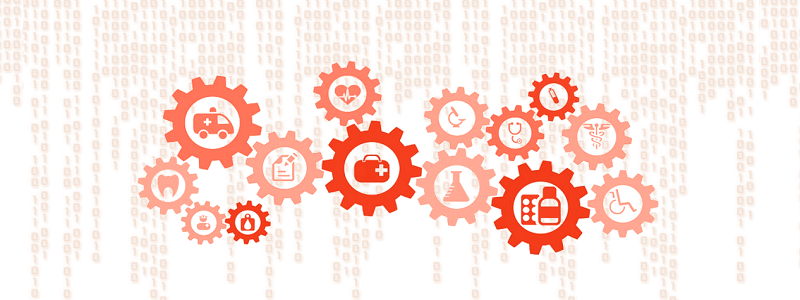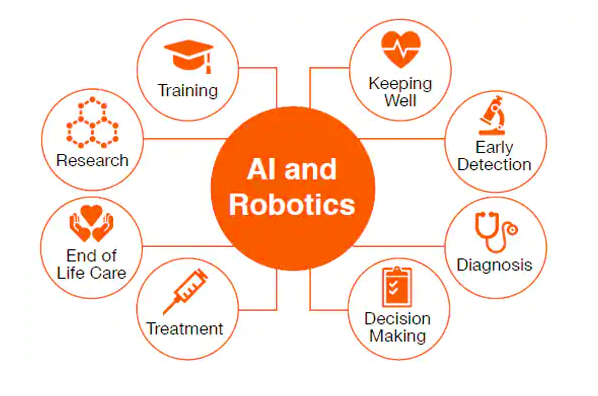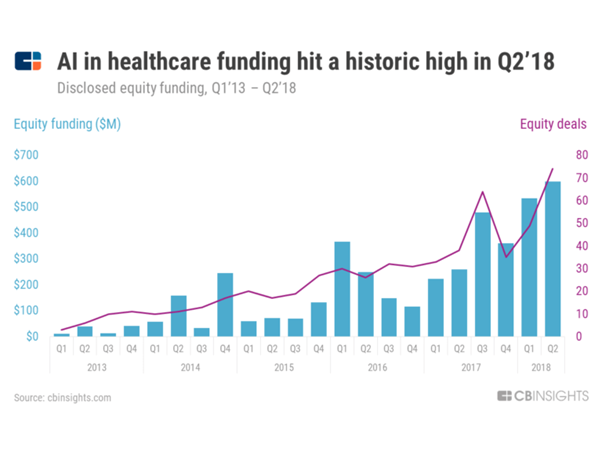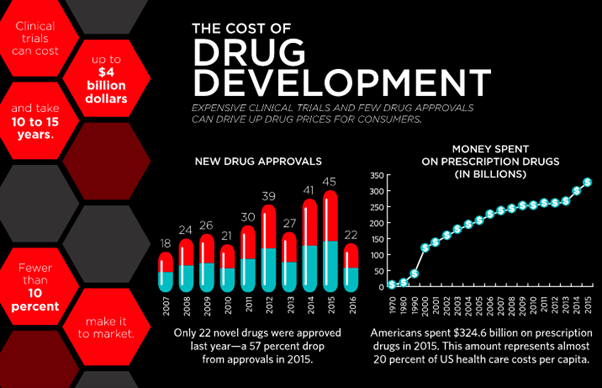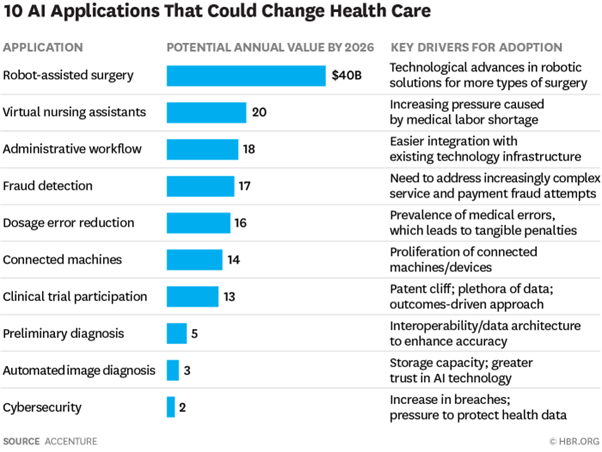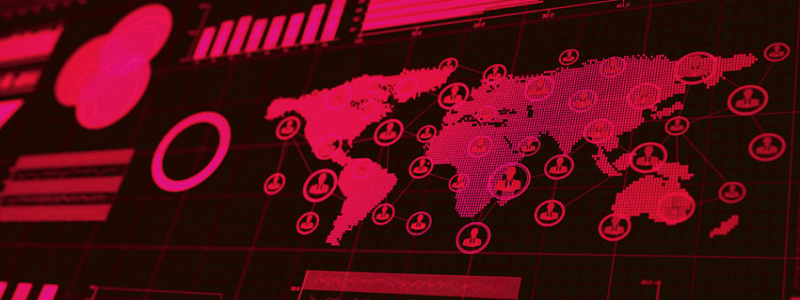Wie künstliche Intelligenz hilft, Krankheiten zu bekämpfen
Die Herausforderungen im Gesundheitswesen sind gewaltig. Die Kosten steigen, das Geld ist knapp und die Margen sinken. Gleichzeitig fehlt es an Pflegepersonal, die vorhandenen Fachkräfte sind überarbeitet. Kliniken müssen effizient wirtschaften, um Patienten die bestmögliche Versorgung zu gewährleisten – und gleichzeitig Datensicherheits- und Compliance-Anforderungen bei der Verarbeitung der anfallenden Daten sicherstellen.
Der Einsatz von künstlicher Intelligenz (KI) kann dabei helfen, dieses Dilemma zu lösen. Algorithmen werden immer besser in dem, was sie tun – und sie arbeiten exakt, schnell und günstig. KI unterstützt in der Medizin und Forschung dabei, Patienten besser zu versorgen, indem beispielsweise Krankheiten früher erkannt werden können. Mit ihrer Hilfe könnten unter anderem die Gesundheitsausgaben in Europa in den kommenden zehn Jahren um einen dreistelligen Milliardenbetrag gesenkt werden, so das Ergebnis der PwC-Studie „Sherlock in Health – How artificial intelligence may improve quality and efficiency, whilst reducing healthcare costs in Europe“. Des Weiteren haben die meisten Patienten keine Berührungsängste: 54 Prozent wären demnach schon heute bereit, sich auf KI und Robotik in der Medizin einzulassen.
KI, ML und DL als medizinische Unterstützung
Algorithmen können in der Medizin auf unterschiedliche Weisen genutzt werden. KI beschäftigt sich mit Methoden, bei denen Computertechnologien es ermöglichen, menschliches Verhalten zu imitieren. Im Rahmen der medizinischen Bildgebung kann KI beispielsweise schnell Anomalien identifizieren, die für das menschliche Auge zu winzig erscheinen – oder große Datenmengen durchforsten. Ein Computertomograph erzeugt bis zu 640 Schnittbilder bei einem einzigen Scan. Wenn ein Radiologe sie ansehen und bewerten müsste, wäre das mit einem sehr hohen Zeitaufwand verbunden. Eine spezielle KI-Applikation kann die Bilder dagegen schnell analysieren und diejenigen markieren, welche Anomalien aufweisen. Die Radiologen können sich damit auf ihre Hauptaufgaben konzentrieren – Diagnose und Heilung.

Ein weiteres Anwendungsgebiet von künstlicher Intelligenz innerhalb der Medizin ist der Einsatz von Intelligent Agents (IA), zum Beispiel für die Überwachung von Vitalwerten von Patienten oder als Kontrollmechanismus für die Arbeit des Pflegepersonals, der Ärzte oder Apotheker. Die Anwendungen überprüfen dann automatisch, ob die verschriebenen Medikamente und Therapien zum Krankheitsbild und zu den Werten des Patienten passen.
Anwendungen aus dem Teilbereich der KI „Maschinelles Lernen (ML)“ lernen eigenständig dazu, je mehr Daten erfasst werden. Chirurgen können ML beispielsweise als Unterstützung verwenden, um den richtigen orthopädischen Eingriff nach einer Sportverletzung vorzubereiten. Die Technologie analysiert Patientendaten und kann die Unterschiede bei Knieverletzungen unterschiedlicher Sportarten sichtbar machen. So stehen dem Arzt detaillierte Informationen zur Verfügung, auf deren Basis er die Behandlung fortsetzt.
Deep Learning (DL) wiederum gilt als Teilbereich von ML und geht noch einen Schritt weiter, indem die Algorithmen nicht nur in der Lage sind, selbständig dazuzulernen, sondern sich auch kontinuierlich zu verbessern. So werden große Datenmengen verarbeitet, aus denen Wissenschaftler mögliche neue Erkenntnisse für Behandlungserfolge gewinnen können. Mit Hilfe von DL lassen sich beispielsweise bisher unbekannte Verbindungen zwischen bestimmten demografischen oder genetischen Indikatoren und unterschiedlichen Krankheiten aufdecken. Ebenso gibt es DL-Algorithmen, die mithilfe großer Datenmengen so trainiert werden, dass sie kleinste Veränderungen in der Zellstruktur erkennen können, die beispielsweise zu Brustkrebs führen. Die Fehlerquote bei der Brustkrebserkennung kann damit um bis zu 85 Prozent sinken, so eine Untersuchung von NVIDIA.
Komplexe KI-Projekte benötigen eine passende IT-Infrastruktur
Damit KI, ML und DL im Gesundheitswesen effektiv eingesetzt werden können, gibt es einige Grundvoraussetzungen. Zunächst einmal sind große Datenbestände notwendig. Diese werden genutzt, um die Algorithmen zu trainieren, damit sie akkurat und autonom arbeiten sowie Muster erkennen und genaue Vorhersagen treffen können. Dabei gilt es so viele Daten wie möglich zu berücksichtigen, unabhängig ob sie über verschiedene Systeme verteilt sind, aus unterschiedlichen Quellen stammen oder von mehreren unterschiedlichen Sensoren gesammelt wurden. Jedoch sollten sie eine hohe Datenqualität aufweisen. Darüber hinaus kann es sich um verschiedene Typen von Daten handeln (strukturiert, semi-strukturiert, unstrukturiert), die sich dynamisch entwickeln und verändern.
Damit Daten überall dort verfügbar sind, wo sie gebraucht werden, gilt es Datensilos aufzulösen und miteinander zu verknüpfen. KI-Projekte stellen somit hohe Anforderungen an die IT-Infrastruktur hinsichtlich Datenverfügbarkeit und Datenqualität, Skalierbarkeit, Informationssicherheit sowie Genauigkeit mit hohen Ansprüchen an die Performance. Eine solch komplexe KI-Umgebung selbst zu planen, zu implementieren und zu unterhalten stellt viele Unternehmen vor große Herausforderungen. Es gibt jedoch schon umfassende Lösungen am Markt. Beispielsweise bietet NetApp zusammen mit NVIDIA und Cisco eine Lösung für die genannten Herausforderungen: ONTAP AI. Diese Architektur vereinfacht das komplette Datenmanagement: Informationen werden über das System sicher erfasst, weitergeleitet und verarbeitet, zum Training verwendet und analysiert.
ONTAP AI basiert auf einer verifizierten Architektur, die NVIDIA DGX-1 GPU‘s mit NetApp All Flash FAS Storage und Cisco Netzwerken zusammenführt und die Effizienz Ihrer KI-/DL-Umgebungen steigert. Herzstück von ONTAP AI ist die NVIDIA DGX-1, ein vollständig integriertes und sofort einsatzbereites Hardware- und Softwaresystem, das speziell für DL entwickelt wurde. Die DGX Plattform nutzt den Deep-Learning-Software-Stack der NVIDIA GPU Cloud, der für maximale GPU-beschleunigte DL-Performance optimiert wurde. Mit dem schnellen All-Flash-Storage und den weltweit ersten End-to-End NVMe-Technologien sorgen NetApp All Flash FAS Systeme für einen kontinuierlichen Datenfluss. So wird sichergestellt, dass die DGX-GPUs optimal mit Daten zur Verarbeitung versorgt werden und somit ein Flaschenhals hinsichtlich Datenbereitstellung durch die Storage-Systeme vermieden wird.
Schnelle Diagnose
ONTAP AI kommt beispielsweise bei „BacillAi“ zum Einsatz, einem System zur Behandlung von Tuberkulose der Technologieberatungsfirma Cambridge Consultants. Tuberkulose ist die zweithäufigste Todesursache in Entwicklungsländern, da die Krankheit mit einer aufwendigen Diagnose verbunden ist: Zellen einer Speichelprobe müssen unter dem Mikroskop gezählt werden. Doch dafür gibt es nur wenig ausgebildetes medizinisches Personal. BacillAi vereinfacht diesen Schritt – und liefert zudem genauere und schnellere Ergebnisse. Ein Smartphone nimmt die Bilder der Speichelprobe von einem Standardmikroskop auf. Der DL-Algorithmus identifiziert Tuberkulose-Zellen, zählt sie und bestimmt das Stadium der Krankheit. Die Diagnose erhält der medizinische Mitarbeiter über eine App – somit ist das Ergebnis der Untersuchung zudem digitalisiert.
Fazit
Künstliche Intelligenz kann das Gesundheitswesen revolutionieren. Unternehmen müssen dafür große Datenmengen aus unterschiedlichen Quellen erfassen, vorbereiten, verschieben, auf sie zugreifen und sie schützen. Damit KI, ML und DL-Projekte erfolgreich sind, brauchen Unternehmen aber eine effiziente Daten-Pipeline und eine Architektur, die eine hohe Performance, Sicherheit und Skalierbarkeit ermöglicht.


